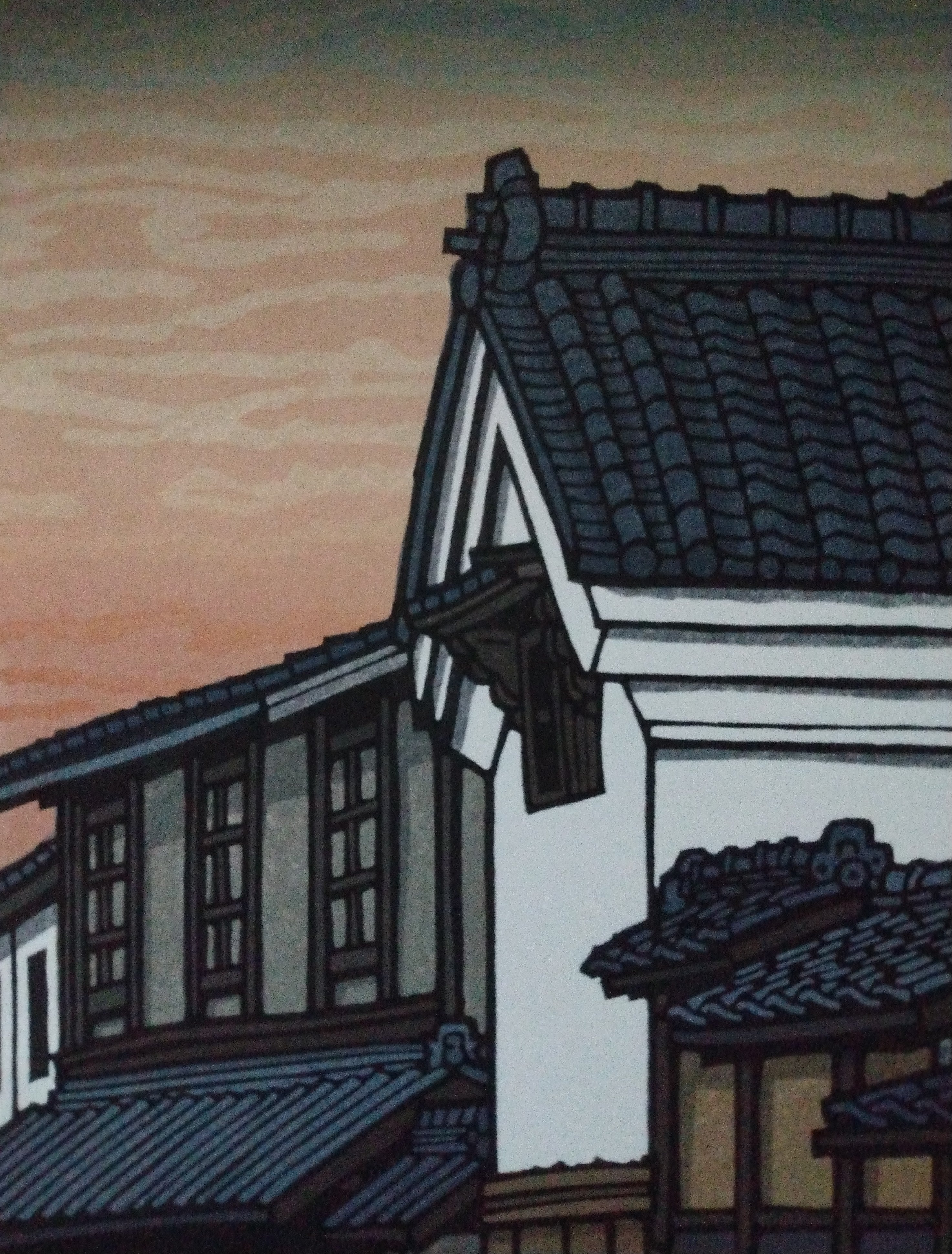Description
Woodblock Print by Katsuyuki Nishijima, "Morning in Sakamoto" (Sakamoto no Asa). Limited edition print, #14 of 500 (first 3.8% of print run). Features artist's signature and red seal. Ca. 1980's. Vertical format; H. 14.75"(37.5cm) X W. 10"(25.5cm). Excellent condition. *Fully matted, framed, & delivered option may be available for local purchasers (I-5 corridor from Seattle to Blaine, WA). Please contact for details.
The image is of old buildings in the town of Sakamoto. The coloring of the sky suggests catching the moment just after sunrise, when a pastel peach, soft pinks, and light blues can all be seen. The pink color is not one often seen in Nishijima's prints, which often catch the rich browns, indigo blues, and architectural shadows of old wooden Kyoto buildings. Sakamoto is located east of Kyoto City at the base of Mount Hiei. The town has long flourished as the gateway to the massive temple complex of Enryaku-ji, which was founded in 788 C.E.
Katsuyuki Nishijima, 1945 – present.
Katsuyuki Nishijima was born in Yamaguchi Prefecture at the southwest end of the main island of Honshu. At the age of 19, he started studying the art of woodblock printing making at the Mikumo Publishing Company in Kyoto. By the early 1970’s, he was beginning his career as a Sosaku Hanga (Creative Print) artist. As opposed to traditional woodblock prints of the 19th Century and earlier that were created by a team of artisans composed of designers, carvers, colorists, printers, and publishers; the Sosaku Hanga movement of the 20th Century highlighted the work of artists who self-drew, self-carved, and self-printed their own expressive works. Nishijima is a very popular contemporary Kyoto print artist and his works have been collected and exhibited widely in Japan, the US, and Europe.
Nishijima’s works could be called “romantic” in that there is something idealized and old-fashioned about his images. They rarely contain people; or modern elements such as cars, telephone wires, or even the ubiquitous Japanese trains. They focus on architectural elements such as tiled and thatched rooftops, verandas, noren shop curtains, the wooden latticework in front of Kyoto machiya buildings, stone walls, as well as Japanese rural landscapes. While these could be considered romantic and detached from reality, these elements still exist in modern-day Japan and are what visitors are drawn to and remember in places like Kyoto, Shigaraki, Takayama, and the like. One could say that instead of romanticizing Japanese scenery, he’s actually bringing out the essence of what is beautiful and important in humanity’s view of traditional Japan.







